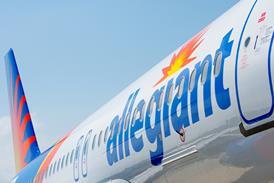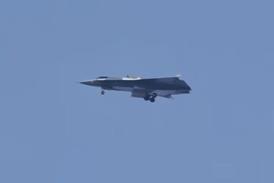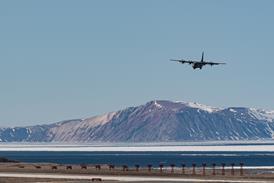Airframer confident of meeting August maiden flight target as it begins testing of software releases for twinjet
Boeing's plans to install two major software loads for the 787's flight computer should not delay the twinjet programme's first flight scheduled in August.
Boeing engineers last week began testing software block point 6.5, with company engineers claiming that the latest software version is greatly improved over previous releases.
The next step in refining the 6.5 million lines of programming code that control the 787's flight computers and aircraft systems is to install software block point 6.7, which mostly contains fixes for any errors that are detected in the software currently installed.
|
|---|
Power substations mean systems need not be wired to nose electronics bay |
Boeing ultimately plans to undertake the maiden flight of the first aircraft - ZA001, which is now on the assembly line in Everett, near Seattle - with software block point 7.0, which is expected to be released later this summer.
However, Mike Sinnett, Boeing's integrated product team leader for 787 systems, says that the aircraft should not be delayed by any problems encountered by the final software release. He points out that the Boeing 777 performed a first flight several months before the final software load was completed."The 777 achieved systems functionality several months after first flight," he says.
Boeing's engineers have reported finding 750 faults so far in the 787's systems operations since 15 December, of which all but 70 have been resolved. New faults are being "constantly discovered" but addressed in the company's several integration laboratories.
Boeing is seeking to drive a 3% boost in aircraft efficiency based on the design and operation of the 787's systems, marking the first time that Boeing has engineered aircraft systems with efficiency improvements in mind, Sinnett says. "Every aspect of design has to push for that efficiency," he adds.
The 787 systems architecture concentrates data into 22 station hubs, compared to the 777's 90 computers scattered throughout the fuselage, Sinnett says.
Aircraft weight caused by distributing electrical power to the various systems is reduced in two ways. Firstly, wiring is reduced by transferring power loads at 235V and at variable frequencies, with motor controller devices used to adapt the frequency into a usable form for each subsystem. Secondly, 17 power sub-stations are positioned around the fuselage, reducing the need to wire each system to the electronics bay in the nose.
Overall, Boeing has reduced the wiring bundles on the 787 by one-third compared to other models. Sinnett estimates that the 787 contains 98km (61 miles) of wiring, compared to about 147km for the 767 and 242km for the 747. The last wiring bundle was due to be completed by the end of last week.
Related articles and links:
Production starts rolling as first test airframe comes together
787 Special
Flight's commercial aircraft directory
Boeing 787 special
First 787 wings arrive at Boeing's Everett plant
Vought produces two aft sections for first 787
First 787 wings to be delivered next month
Spirit builds first 787 nose section
FAA proposes special 787 fire test
Boeing 787 passes 500 sales
Boeing unveils 787 interiors
Source: Flight International
























